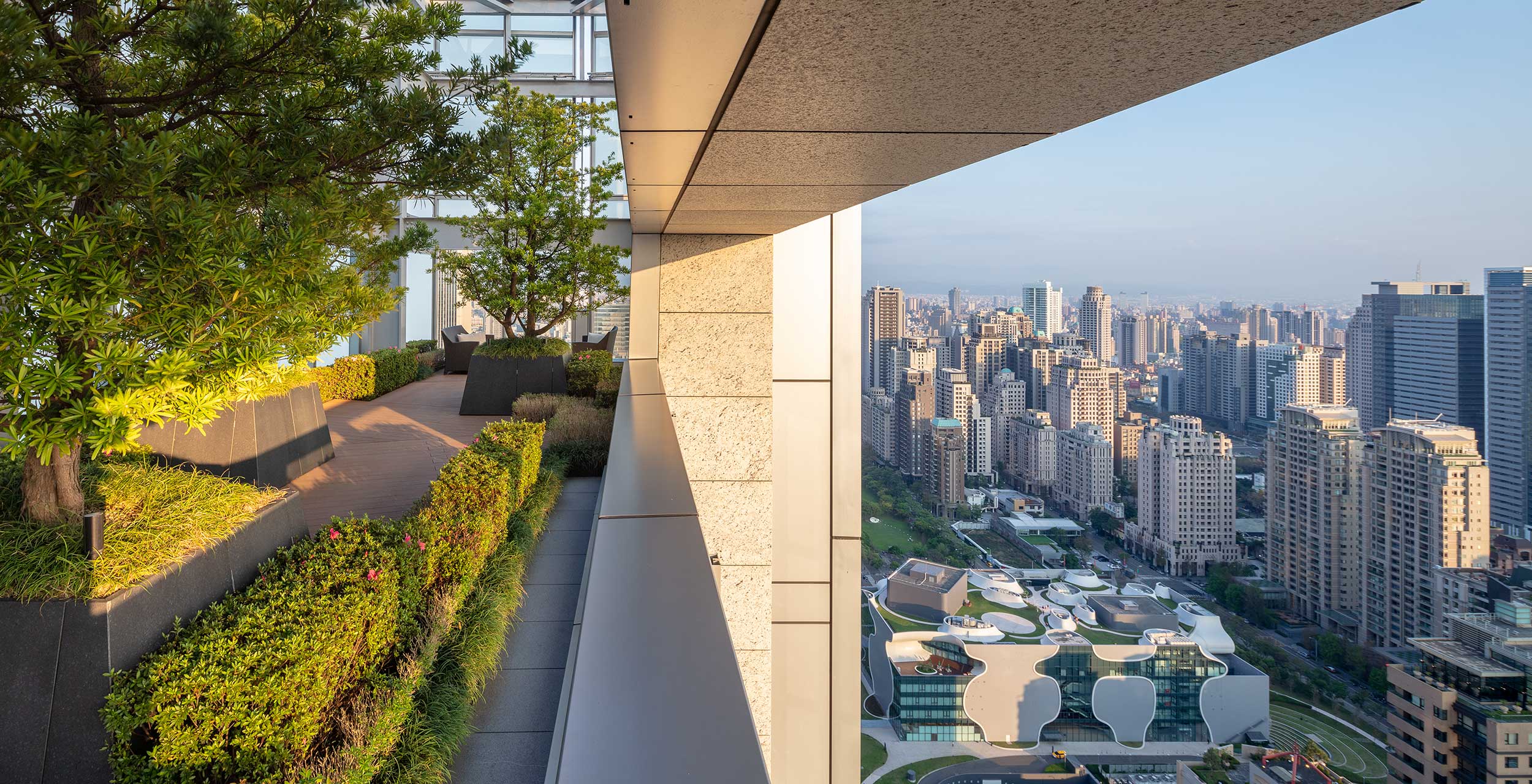Thank you to the Boston Society of Landscape Architects (BSLA) for hosting an excellent live-streamed award ceremony this week and congratulations to all of the winners! We are honored to receive the Design Merit Award for Solitaire Residential Tower in Taichung, Taiwan.
Photo by John Horner.
Landworks Studio developed the design for the public realm and streetscape, various garden rooms, as well as two roof decks for this new 41-story, residential condominium tower located in Seventh District of Taichung, Taiwan. The notion of the ‘gallery’ emerged from the proximity of this project to the Taiwan Opera House, a facility that’s come to represent the center for the Arts in Taichung and consistently draws in individuals who share those values, particularly those who have elected to make Solitaire their home.
Photo by John Horner.
In keeping with a series of past and ongoing projects within the Seventh District, the project began with a charge by the client to reinforce and extend strong urban public realm connections beyond the site itself, which existed in varying degrees at points around the site. The existing sidewalk conditions were very hot and open and defined by expanded areas of asphalt and precast pavers with very few street trees. The first move by the design team was to establish a public realm defined by densely planted street trees (Taiwanese Zelkova) as well as a layered understory planting to further cool the ambient air temperature at the ground plane. Innovative paving patterns were developed as part and parcel of a larger urban, District-wide sidewalk branding idea developed by our team. A sophisticated notion of layered night-lighting also sets an unmistakable domestic scaled mood while combating obnoxious ‘night sky’ violations defining much of the surrounding streets. Consequently, there has been a noticeable return of bird life to the area.
Photo by John Horner.
Leaving the public realm, the nature of the design becomes increasingly privatized: a process of developing a series of outdoor gallery spaces that would appeal to the identified demographic of the future residents. In this case, these ‘galleries’ are defined by the artful combination of natural materials and geometric patterning to achieve fully immersive landscape experiences. The design team took careful delight in establishing innovative dialogue between textures and tones of natural materials, geometries, organic/growing plant materials and dramatic swings in light and temperature conditions, micro-climates and building technologies.
Photo by John Horner.
Striking art walls bookend the arrival experience, providing a materially and visually robust threshold to the main entrance of the building. The ground plane is defined by a mosaic of granite octagons of various tonal and dimensional proportions creating a seamless, almost fluid sense of ground plane.
Photo by John Horner.
Other Gardens within the footprint of the site and on the upper levels of the tower engage phenomena of reflectivity, light and texture to enhance the notion of the contemporary outdoor gallery. In each of the spaces, the design optimizes the precise nature of light, temperature and view as mechanisms for structuring the space.
Photo by John Horner.
The 41st rooftop terrace allows for fantastic views to the surrounding city, including direct views to the Ito Opera House below. Large stone veneer panels, water elements and raised planters containing trees extend the fascination with natural materials, modularity and the play of natural light to the very top of the tower in the form of a large party space.
Photo by John Horner.







